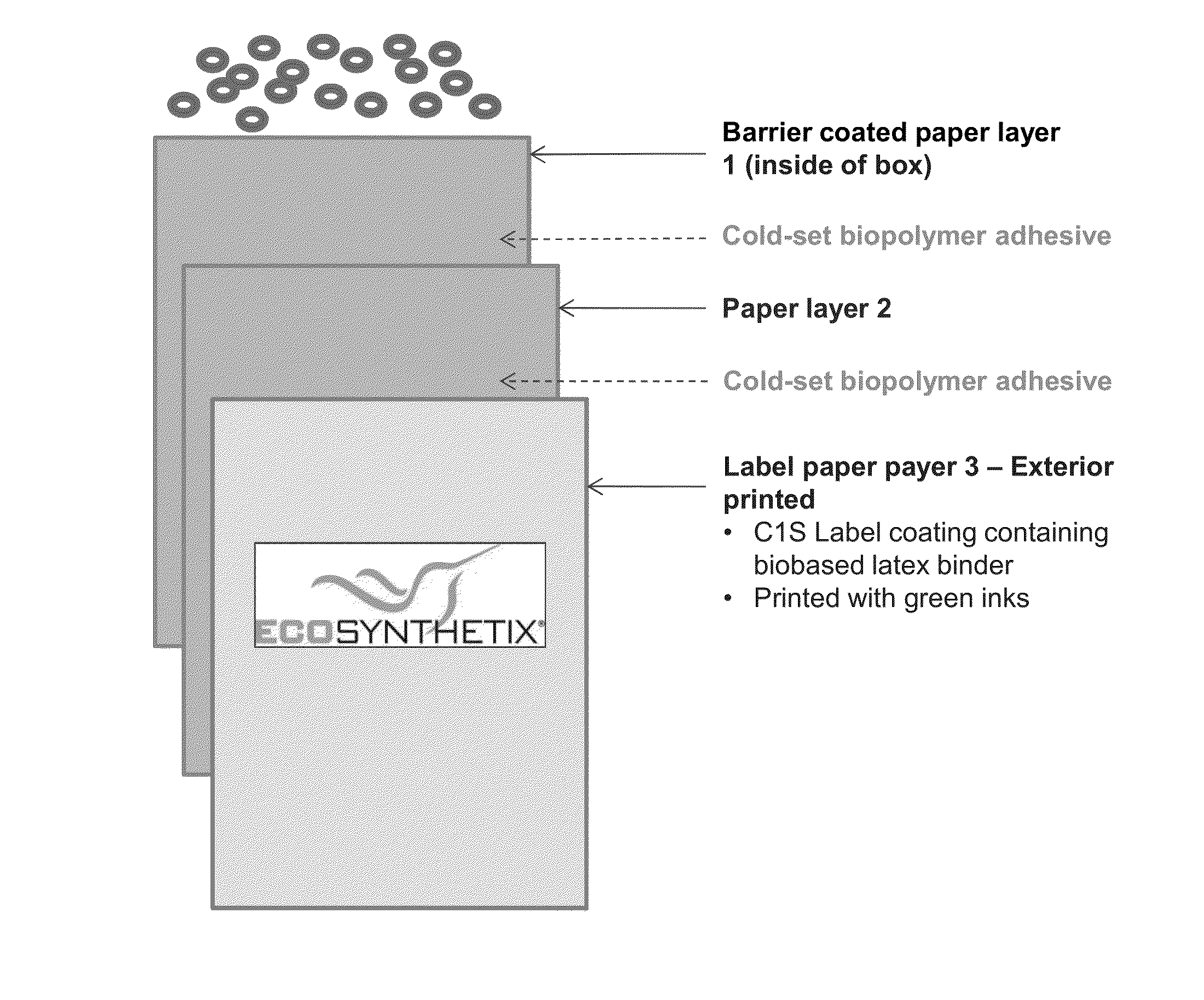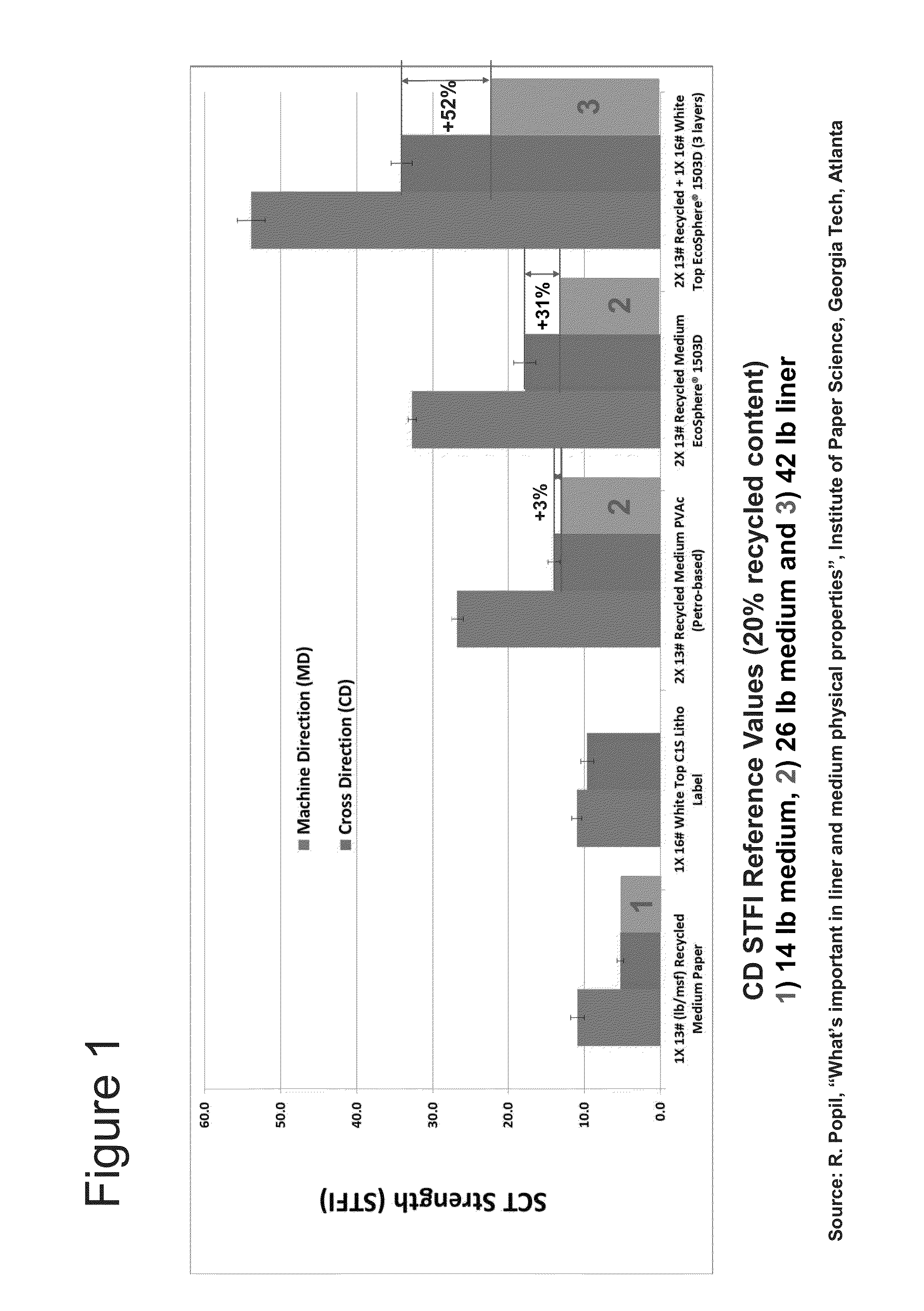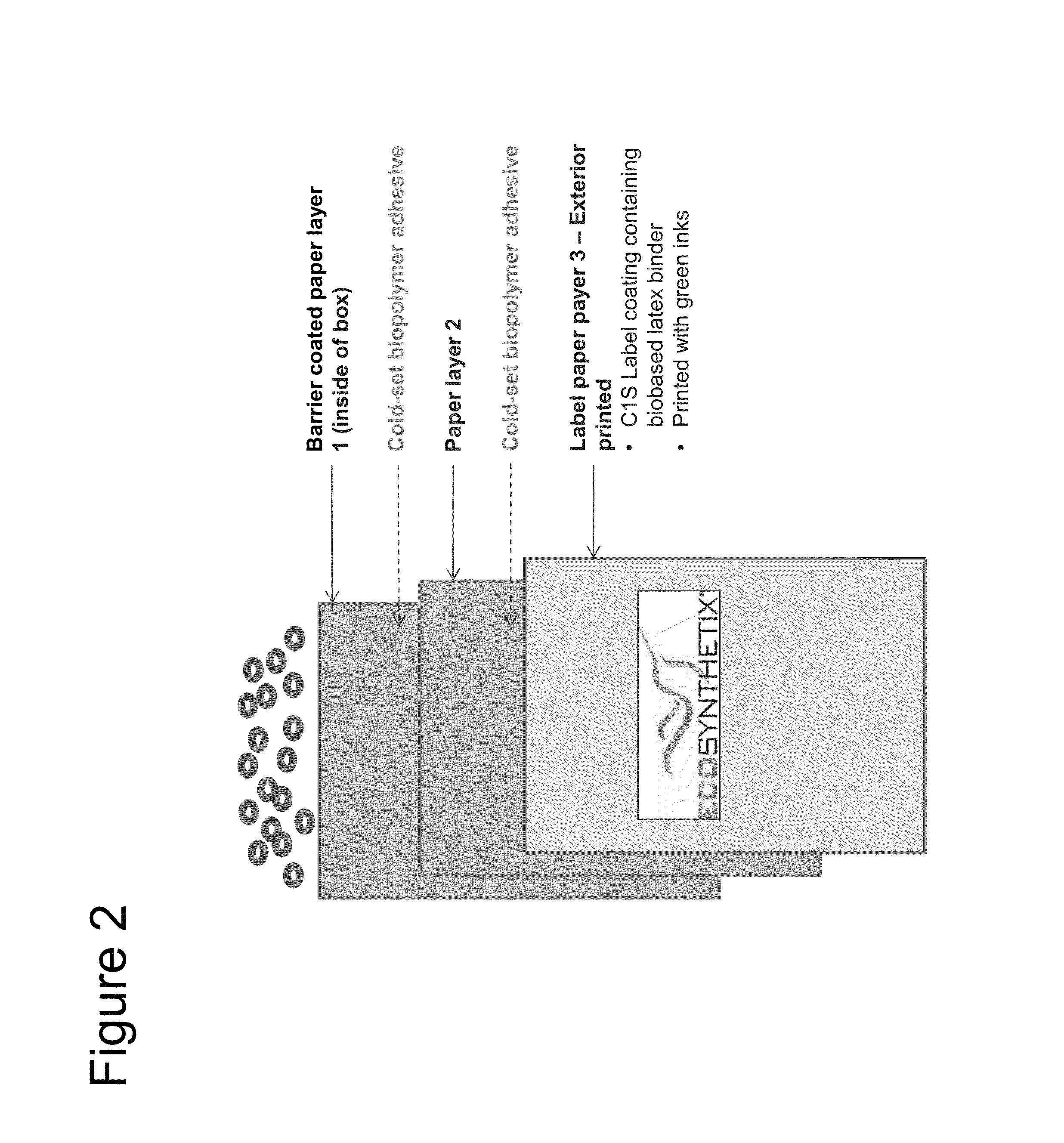Cold-set biobased laminating adhesive for paper or paperboard products, and packaging materials
a biobased, adhesive technology, applied in the direction of domestic packaging, rigid containers, packaging, etc., can solve the problems of not being able to commercialize, still be gelatinized on site, and relatively complex methods, and achieve the effect of enhancing strength and barrier properties
- Summary
- Abstract
- Description
- Claims
- Application Information
AI Technical Summary
Benefits of technology
Problems solved by technology
Method used
Image
Examples
example 1
[0049]A biobased adhesive composition was prepared by adding 7.75 g (i.e. 7.29 g on a dry basis) of biopolymer nanoparticles powder agglomerate (EcoSphere® X202 from EcoSynthetix Inc.; exp. solids=94.0% using CEM Smart System 5 Microwave Dryer at 120° C. for 5 mins) to 20.8 g of room temperature water containing 0.12 g sodium carbonate, followed by 0.54 g of Acticide™ GA (a biocide from Thor Chemicals). The agglomerate powder was fully dispersed within 15 mins under mechanical shear using a lab turbine mixer to obtain the 25 wt % dispersion. The pH was 9.2 and the RVII Brookfield viscosity was 350 cps at 20° C. (100 rpm spindle speed).
example 2
[0050]A biobased adhesive composition was prepared by adding 7.75 g (i.e. 7.29 g on a dry basis) of biopolymer nanoparticles powder agglomerate (EcoSphere® X202 from EcoSynthetix Inc.; exp. solids=94.0% using CEM Smart System 5 Microwave Dryer at 120° C. for 5 mins) to 28.4 g of cellulose nanocrystals (CNC) (provided by Forest Products Laboratories, Madison, Wis., prepared by using a sulfuric acid process, Lot number 2012-FPL-CNC-043; exp. solids=6.8% using CEM Smart System 5 Microwave Dryer at 120° C. for 5 mins), followed by 0.12 g sodium carbonate and 0.54 g of Acticide™ GA (Thor Chemicals). The agglomerate powder was fully dispersed within 15 mins under mechanical shear using a lab turbine mixer to obtain the 25 wt % dispersion. The pH was 8.3 and the RVII Brookfield viscosity was 1000 cps at 20° C. (100 rpm spindle speed).
example 3
[0051]A biobased adhesive composition was prepared by adding 7.75 g (i.e. 7.29 g on a dry basis) of biopolymer nanoparticles powder agglomerate (EcoSphere® X202 from EcoSynthetix Inc.; exp. solids=94.0% using CEM Smart System 5 Microwave Dryer at 120° C. for 5 mins) to 28.4 g of cellulose nanofibrils (CNF) (provided by Forest Products Laboratories, Madison, Wis., prepared by using a TEMPO-oxidation process, Lot number 2012-FPL-CNF-040; exp. solids=0.75% using CEM Smart System 5 Microwave Dryer at 120° C. for 5 mins), followed by 0.12 g sodium carbonate and 0.54 g of Acticide™ GA (Thor Chemicals). The agglomerate powder was fully dispersed within 15 mins under mechanical shear using a lab turbine mixer to obtain the 25 wt % dispersion. The pH was 6.6 and the RVII Brookfield viscosity was 1620 cps at 20° C. (100 rpm spindle speed).
PUM
| Property | Measurement | Unit |
|---|---|---|
| temperatures | aaaaa | aaaaa |
| temperatures | aaaaa | aaaaa |
| temperature | aaaaa | aaaaa |
Abstract
Description
Claims
Application Information
 Login to View More
Login to View More - R&D
- Intellectual Property
- Life Sciences
- Materials
- Tech Scout
- Unparalleled Data Quality
- Higher Quality Content
- 60% Fewer Hallucinations
Browse by: Latest US Patents, China's latest patents, Technical Efficacy Thesaurus, Application Domain, Technology Topic, Popular Technical Reports.
© 2025 PatSnap. All rights reserved.Legal|Privacy policy|Modern Slavery Act Transparency Statement|Sitemap|About US| Contact US: help@patsnap.com



